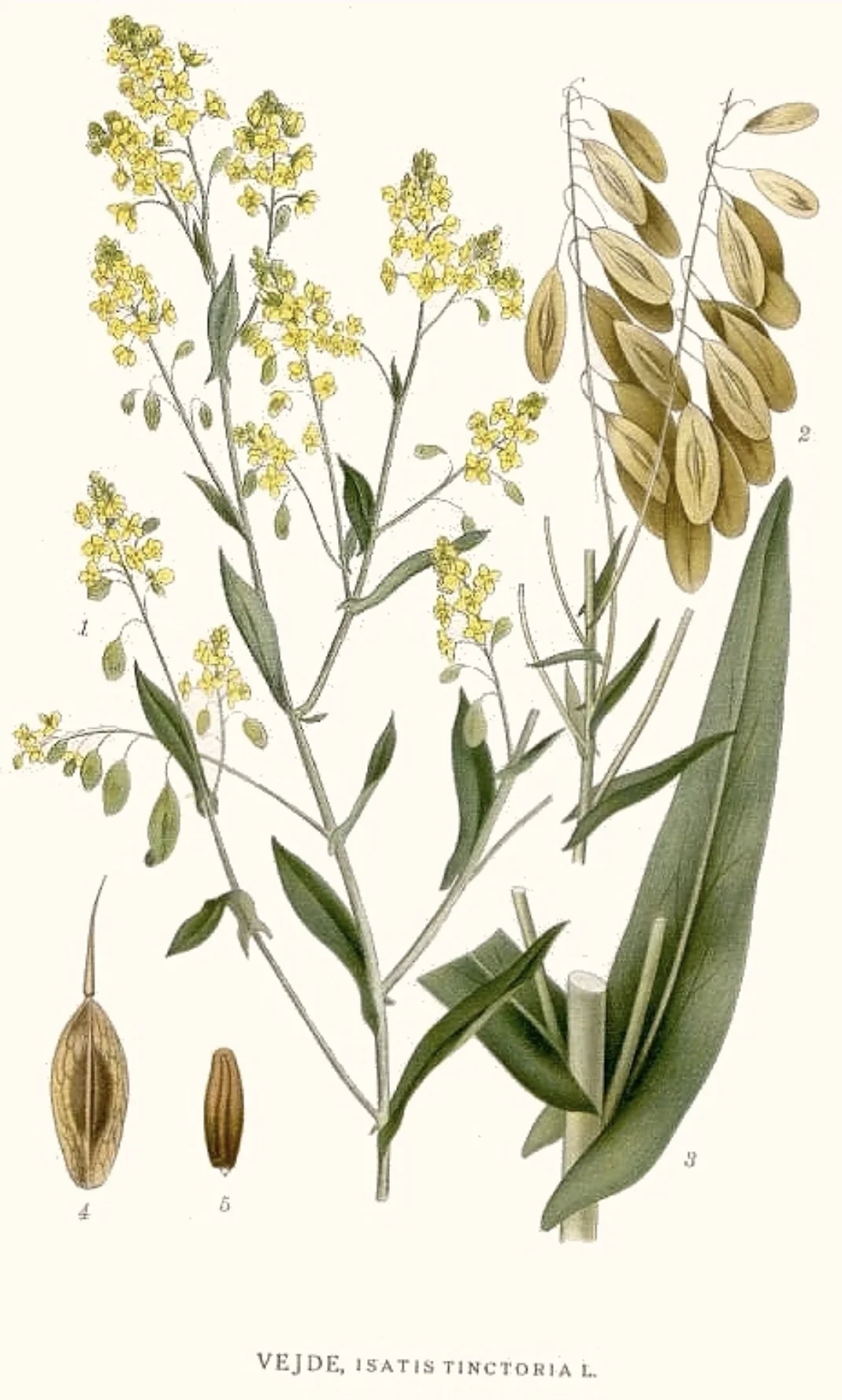Woad
Woad
WOAD SEEDS
Isatis tinctoria
Thought to originate in the Caucasus and now indigenous to most of Europe and Asia. The use of woad as a dye dates to the Neolithic. Along with weld and madder, woad was a staple of the European dye industry. By the 16th century, Indigofera tinctoria was the preferred source of blue dye. By the 20th century, synthetic dyes rendered both botanical sources commercially obsolete.
Woad is easy to grow and is a superior and versatile dye plant. Safe for use with children. It is a biennial that will self-sow if allowed to. Take care to collect the seeds and to transplant any errant plants in the landscape to where they may be ethically tended.
Plants will grow to 3'-4' in all directions and can provide multiple harvests of leaves throughout the growing season. Do not plant near other crops as woad is potentially allelopathic and may hamper the growth of other species.
Easy to germinate: soak seeds overnight in tepid water and sow about 1/8" deep in moist soil, pressing to keep seed snug. Kept warm (65°F) and moist in bright light seeds will usually germinate within a week or so. Prick out seedlings to grow on in individual pots or cells. Plant outdoors in well-drained soil after the last spring frost. According to some sources, woad may produce better blues if given high-nitrogen fertilizer, such as composted manure or bloodmeal. First year plants are also thought to produce better blues, but this is highly subjective.
Packet contains at least 50 seeds.
